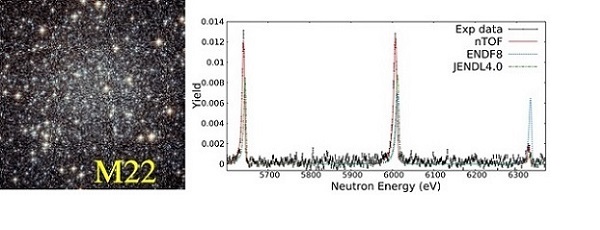Little was known about the origin of cerium, a “rare earth” metal found in many electronic devices. In a recent article published in Physical Review Letters (https://doi.org/10.1103/PhysRevLett.132.122701) and selected as an Editors’ Suggestion, the n_TOF collaboration (https://ntof-exp.web.cern.ch/) sought to shed light on the topic.
However, the nuclear data—particularly the high-accuracy data recently obtained at n_TOF—are not consistent with what is predicted by stellar nucleosynthesis models. This significant disagreement clearly indicates the need to reconsider the mechanisms responsible for cerium (and other heavier elements) production in the Universe.
The measurement of the radiative capture cross-section was performed at the neutron time-of-flight facility n_TOF at CERN. The available intense neutron beams with excellent energy resolution made it possible to observe neutron resonances in the energy range involved in cerium production in stars.
The proposal (https://cds.cern.ch/record/2299593/files/INTC-P-533.pdf), stemming from a curious discrepancy between stellar models and observational data in the M22 globular cluster, is the result of a close collaboration between INFN-Bologna, INAF, and ENEA. Below are some press releases on Physical Review Letters: https://physics.aps.org/articles/v17/47, and CERN: https://www.media.inaf.it/2024/03/21/cerio-accendino-universo/
More information about the n_TOF collaboration: https://www.bo.infn.it/gruppo3/n_tof/
Contacts: Cristian Massimi massimi@bo.infn.it, Alberto Mengoni mengoni@bo.infn.it


